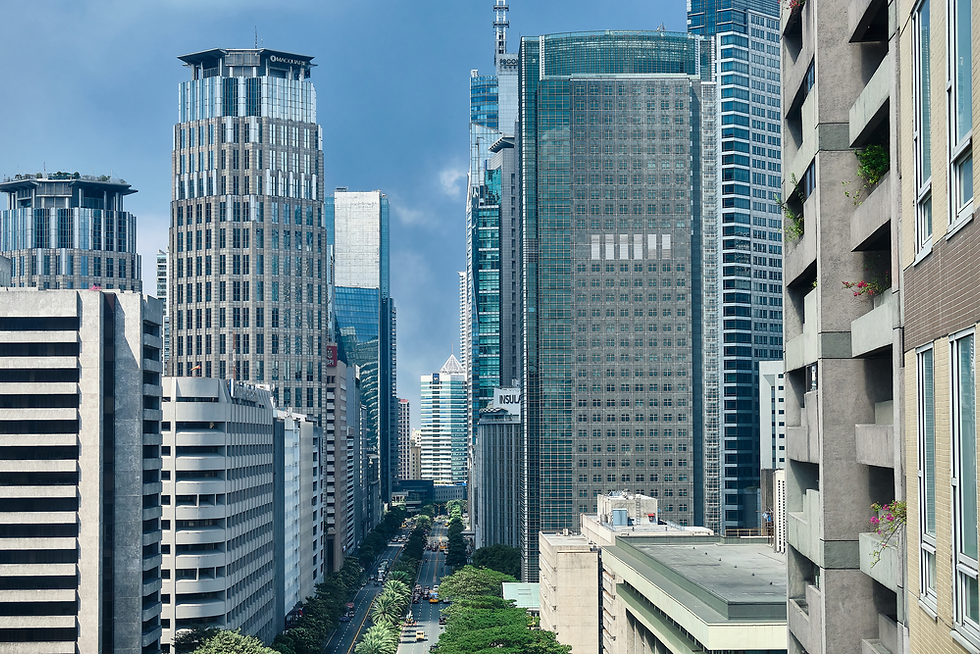Navigating the Philippine Real Estate Landscape: Trends and Projections
- bedandgoinc
- 2023年9月13日
- 読了時間: 3分
Date: September 13, 2023

Source: [Lamudi] Tall residential and commercial buildings within the Fort Bonifacio area of Taguig City.
The Philippines' real estate sector stands as a cornerstone of the nation's economy, boasting a pivotal role in generating a gross value added of approximately 536 billion Philippine pesos in 2022. Fueled by the burgeoning middle-class population and steady inflow of remittances from overseas Filipino workers (OFWs), the purchasing and investing power of Filipinos in real estate assets has seen a gradual ascent over recent years.
Residential Real Estate: A Kaleidoscope of Options
The tapestry of residential real estate in the Philippines spans an extensive array of properties, ranging from public and private housing to mid-range subdivisions, high-end condominiums, and exclusive villages. A 2020 survey underscored the prevalence of single-house units among Filipino households, with over half owning or enjoying owner-like possession of their homes. The urban landscape, particularly in Metro Manila, witnesses common practices such as renting apartments, investing in rent-to-own subdivision units, and leasing condominiums.
Property pricing dynamics are intrinsically tied to geographical location, with prime condominium units in urban centers fetching prices as high as 220 thousand Philippine pesos per square meter. However, a pressing demand for affordable housing persists due to rural-urban migration, magnifying the urgency of addressing the housing needs of low-income families. The intersection of this demand with the Philippines' vulnerability to natural disasters accentuates the complexity of the housing scenario. Collaborative efforts between governmental bodies and the private sector are poised to expedite land inventory and socialized housing development, providing a response to the housing gap and the growing informal settler population.
Commercial Real Estate: Rebounding from Challenges
The commercial real estate sector, encompassing office spaces, industrial properties, retail spaces, and hospitality establishments, embarks on a journey of recovery after grappling with the consequences of the COVID-19 pandemic. The Information Technology and Business Process Management (IT-BPM) sector remains a stalwart driver of office space demand, while the revival of the Philippine offshore gaming operators (POGO) industry is anticipated in the near future. A decline in office space vacancy rates hints at the sector's resurgence as corporations progressively reoccupy office spaces.

Source: Lamudi
Retail real estate has also witnessed promising improvements in vacancy rates, notably in cities like Taguig and Makati, where vibrant shopping malls and retail outlets thrive. Food, beverages, clothing, and apparel continue to spearhead the impending surge in retail real estate supply.
Economic Outlook and Bright Prospects
Against the backdrop of the COVID-19 crisis, the Philippine property market is poised for a robust resurgence in 2023. With the economy experiencing a remarkable growth of 7.6% in the previous year, the real estate sector is positioned to benefit from the positive signals associated with economic expansion. The property market's dynamics often mirror the economic trajectory, and the current growth trajectory augurs well for both the office and residential sectors.
Colliers, a leading research firm, projects a net office space absorption of 228,000 square meters in 2023, driven by sectors such as healthcare, logistics, finance, and more. The residential segment anticipates a slowdown in project completions but foresees continued demand, aligning with the evolving preferences of homebuyers post-pandemic.
The hotel segment looks to benefit from the recovery in tourism, with hotel occupancy rates projected to exceed 60% in Metro Manila. The retail space sector is expected to evolve in conjunction with the rise of online shopping, requiring a balance between brick-and-mortar experiences and digital convenience.
Seizing Opportunities Amid Challenges
While the Philippine real estate sector is poised for growth, potential challenges loom on the horizon. The uncertain global economic landscape and geopolitical conflicts could exert pressure on the industry. However, such challenges could also be viewed as opportunities for the Philippine property market to adapt, innovate, and persevere.
Developers are encouraged to explore opportunities beyond Metro Manila, diversify their offerings to align with post-pandemic preferences, and cater to shifting demands in the residential and commercial sectors. The industry's resilience remains a testament to its enduring significance in the Philippines' economic fabric.
In conclusion, the Philippine real estate landscape intertwines with the nation's economic growth, driven by a burgeoning middle class and robust remittances. The sector's dual aspects—residential and commercial—navigate unique challenges and seize opportunities for growth, all while adapting to evolving preferences and economic fluctuations. As the journey continues, collaboration between public and private entities will be pivotal in shaping a vibrant and sustainable future for the Philippine real estate industry.
Disclaimer: The information in this blog post is based on data available as of June 2, 2023, and might not reflect the most current developments in the Philippine real estate industry. The insights shared are a result of the synthesis of publicly available information and do not constitute financial or investment advice.
Sources:







コメント